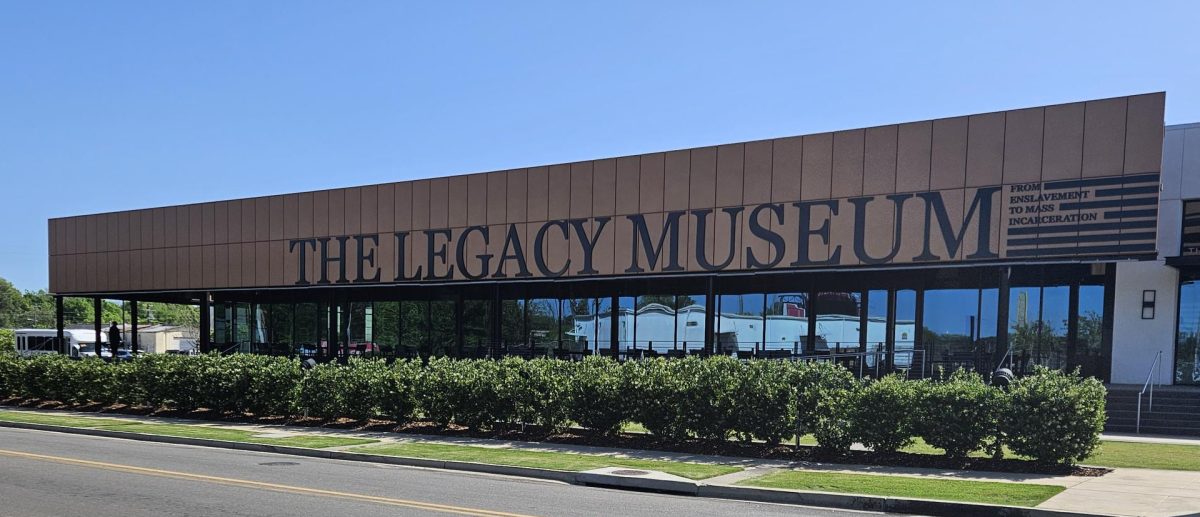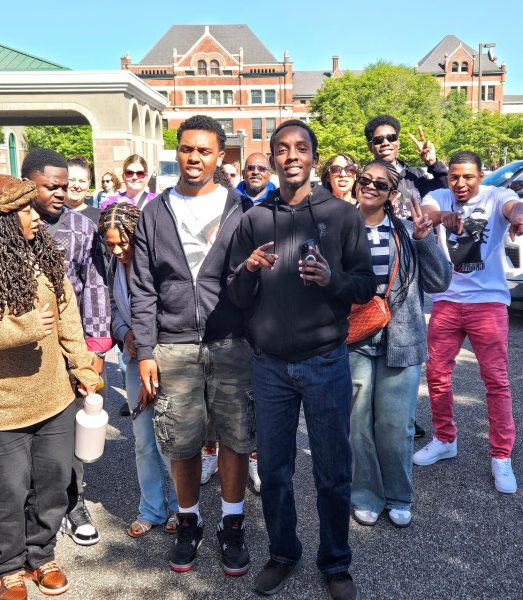
Tom Mercer
The Legacy Museum, Montgomery, Alabama. April 2025.
On April 7th, 2025, while most students were on spring break, a diverse group of Solano Community College students, teachers, and staff embarked on a profound journey through America’s complex history. Their destination: The Legacy Museum: From Enslavement to Mass Incarceration located at 400 N. Court St in Montgomery, Alabama.
The museum, opened on April 26 2018, created by The Equal Justice Initiative, a non-profit organization founded by Bryan Stevenson, a Montgomery based civil rights attorney. The museum is situated on the former warehouse site that once held enslaved individuals and offers an immersive experience tracing the evolution of racial injustice from the early transatlantic slave trade to contemporary mass incarceration.
The museum, which receives no public funding, takes those who enter their doors through a gamut of emotions as they navigate on a self-guided interactive experience that weaves the story of slavery, Reconstruction, Jim Crow segregation, the Civil Rights Movement, and current issues of injustice and mass incarceration.
Immediately, those who first enter the museum are greeted by a haunting depiction of the unfortunate souls that were captured from the African continent, but did not survive the trip over the Atlantic. Their bodies, tossed in the ocean, were depicted in the museum as corpses washed up and buried up to the waist and shoulders on a dark nameless beach somewhere. It is a startling introduction to the Legacy Museum, and can be a gut punch to anyone who enters for the first time.
This is just the beginning.
As museum attendees visit each section and experience the tragic aspects of the slave trade, they can see holographic silent “ghosts” of newly captured slaves ripped from their homes on the African continent, as they wait for the auction block. They can also listen to prison inmates tell their personal stories behind glass partitions, while sitting in a mock-up of a prison’s visitor wing.
The museum includes a plethora of interactive exhibits, using sight and sound to depict the history of oppression, such as the first hand accounts that can be heard describing slave auctions and lynchings that happened in this country. Some visitors can even write on, such as taking the actual test that African-Americans had to take at one time in order to vote.
One of the most riveting displays that the museum had to offer is a vast wall of glass jars that contained the actual soil of lynching sites in the United States. On each jar, printed in black, is the location of where the soil came from and date of the particular lynching.

The Solano group also ventured out to Tuskegee University, forty miles east of Montgomery. Tuskegee University, opened in April 1966, was the first Black college to be designated as a Registered National Landmark and the only Black college to be designated a National Historic Site by the U.S. Department of Interior. The University is also known as the number one producer of African-American aerospace science engineers, as well as a leading producer of African-American chemical, electrical, and mechanical engineering graduates.
The University also has a tragic history as it was the home of the Tuskegee experiments. From 1932 to 1972, the United States government’s syphilis experiments on lower income African-Americans that lived in and out of Tuskegee area. The experiment participants were deliberately and unknowingly infected with syphilis in order to monitor the debilitating effects of the disease.
The Solano group was able to view the building where the experiments took place as it is still standing to this day.
The group then visited Moton Field, the airfield that the University used to create the 1941 training program whose graduates were known as the Tuskegee Airman. The small remote airfield, about four miles away from the University, has two museums depicting the history of the airmen and the field. The airfield was listed on The National Register of Historic Places in 1998.
The group made two final stops on the last day of the four-day trip. One was the Freedom Monument Sculpture Park, a 17-acre outdoor sculpture park located north of the Legacy Museum, and easily accessed by shuttle. Overlooking the Alabama River, where slaves were brought down before they were brought to the marketplace to be sold. According to the park’s visitor’s guide, the park honors nearly four million formerly enslaved whose family names are listed in the 1870 census.
According to Kailee Vallente, who attended the trip with her mother, Krista Vallente, a Solano business student, the park made the biggest impression on her. She was “fascinated by the fact that [she] was standing on the land that was being used to sell and trade people” and “seeing the emotions” that sprung to life through the various sculptures that occupied the park. Each sculpture told a story of the history that she hadn’t known.
Kailee remembered “learning some things in middle school about the slave trade, but didn’t know that there were so many people and how poorly they were treated. Worse than they would treat an animal.”
The second location that the group visited that day was The National Memorial for Peace and Justice, about a 20 minute walk from the main museum. Located southeast from downtown Montgomery, The National Memorial highlights the active era of racial lynchings that took place from 1877 to 1950. Thousands of stories of the named and unnamed victims were told on slab sculptures that in some cases resembled tombstones, highlighting the unfairness and unjustified actions of the racially-motivated attacks throughout that era.
The Solano group that participated in the trip were pulled from a variety of diverse backgrounds from business, journalism, political science, history, as well as IT, biology and science professors. It was a trip that was designed to appeal to people of all ages, backgrounds and interests.
The trip was made possible through a grant initiated by the SOAR (Students Overcoming Adversity & Recidivism) office on the Solano campus; organized by it’s Program Director and A2mend Advisor, Shanan Danley; joined by Curley Wikkeling-Miller, the co-founder at D.R.E.A.M. Financial Academy and an Adjunct Professor of Cosmetology at Solano. It is through their expert planning and guidance that thirty-three eager participants were able to make the trip eastward to Alabama.
Solano Community College and the SOAR office hopes to make the trip to Montgomery and the Legacy Museum a yearly event, with possible side trips to the historic cities of Selma and Birmingham.